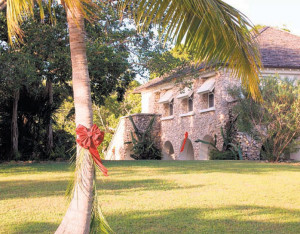
The history of Lignumvitae Key dates back in time when the islands of the Florida Keys were a living coral reef. Sea level has fluctuated over time and has been as much as 300 feet lower than today and as much as 60 to 100 feet higher than today, drastically changing the footprint of the state. When sea level dropped close to its present level, the island chain was formed. Native Americans utilized the islands of Lower Matecumbe, Upper Matecumbe, Lignumvitae and Indian Key for their daily life. However, early settlers were unable to access the Lignumvitae Key due to the lack of deep water, and the island did not appear on maps until 1743.
One of the original names was Isla de la Lena, which means “isle of firewood.” Odd since the island was never harvested for timber. It was later named Lignumvitae Key because of the population of lignum vitae trees. The first record of habitation was in 1831, and by the time William Matheson bought the island in 1919, there had been nine owners. As a result, there has been minimal alteration to the island, and much of the hammock remains in as pristine condition as one can find in the Keys. In the early 1920s, a 5-acre parcel was cleared; a house, cistern, hurricane shelter and chicken coop were constructed; trails were developed in the hammock; an airstrip was cleared; and 15-acres of hammock were cleared for agriculture.
An odd assortment of animals including white-tailed deer, peacocks, goats and Galapagos tortoises once called the island home. David Fairchild assisted with the landscape planting until the beginning of World War II. When the island was sold to the last private landowners in 1953, Russ and Charlotte Niedhauk became the caretakers. Russ recognized the valuable significance of the hardwood hammock and brought in scientists to study the plant and animal life. As early as the mid- 1960s, conservation efforts were underway by Dr. John Poponoe and Sandy Sprunt to protect the island from development. When it became evident that the owners, who tried to develop the island and gain access by building a causeway from Indian Key fill, wanted to sell the island, a partnership called the University Council encouraged the state of Florida to purchase Lignumvitae Key.
This group worked with state officials to map out a plan for purchasing the island and making it a state park. Since the owners were unwilling to sell to the state, The Nature Conservancy stepped in and purchased the island in 1971 for $1.75 million, making Lignumvitae Key the first botanical state park. The Florida Park Service manages the cultural area of Lignumvitae Key to represent the time period between 1919 and 1953, when it was owned by the Matheson family. Visitors to the park can tour the Matheson House, take a ranger-led tour through the hardwood hammock and experience a step back in time.
For more information about Lignumvitae Key Botanical State Park, visit FloridaStateParks.org. Janice Duquesnel is a biologist with the Florida Park Service.
Read More on – Florida Keys Parks – Things to do in the Upper Keys – Upper Keys Job Listings
